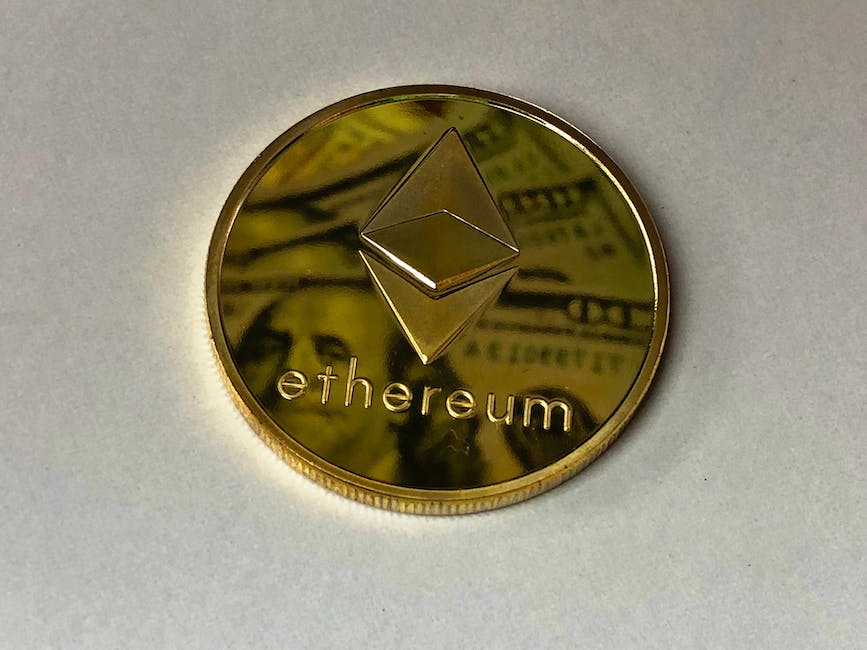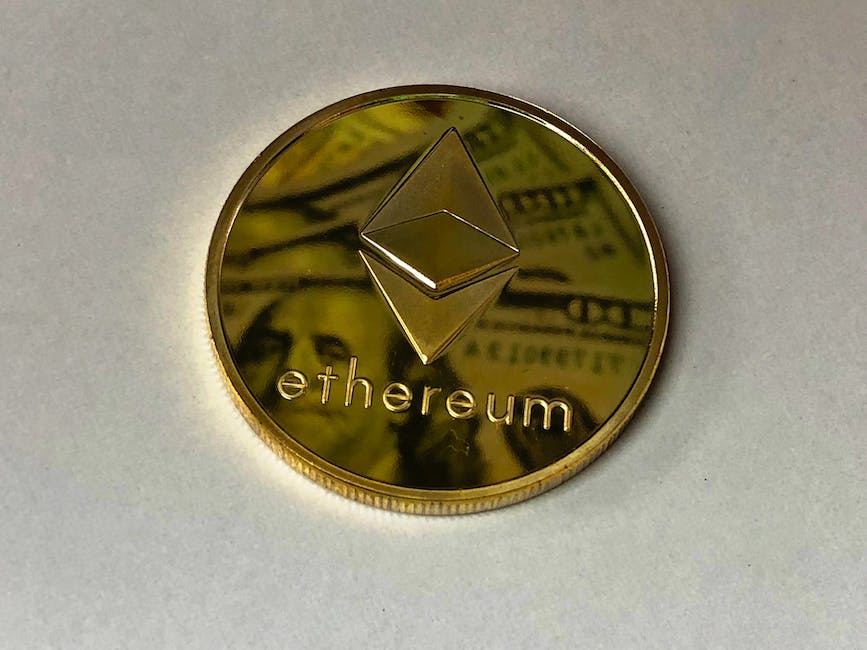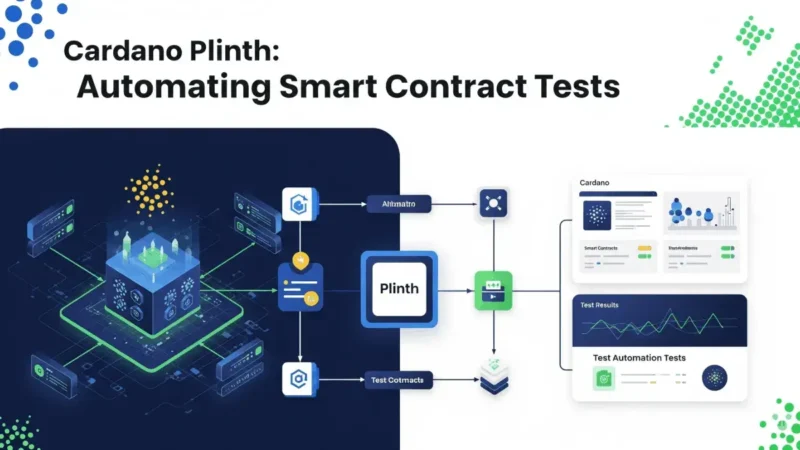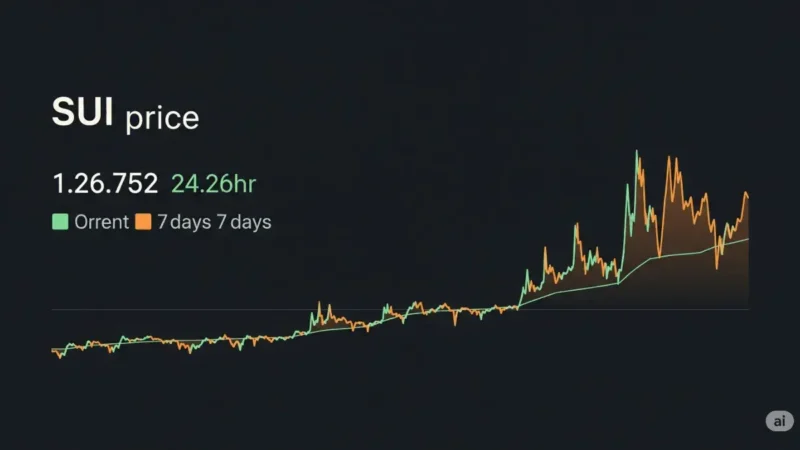Uncover the Power of Ethereum (ETH) for the General Public

In the digital world where technological strides are leapfrogging conventional mechanisms, Ethereum (ETH), a decentralized, open-source blockchain with its smart contract functionality, is carving a unique space for itself. Launched by Vitalik Buterin, Ethereum has transformed the way transactions and operations function in various sectors, stretching from finance to gaming. This revolutionary technology, boasting of its automatic execution of transactions without needing a third party, is transforming our approach towards secure and trusted processes in a digital order.
What is Ethereum (ETH)
Understanding Ethereum (ETH)
Ethereum, more commonly known as Ethereum, is a decentralized, open-source blockchain-based platform. The primary purpose of this platform is to enable the creation, deployment, and execution of smart contracts. A smart contract is a self-executing contract wherein the agreement between a buyer and a seller directly is written into the code. These contracts automatically execute transactions without the need for a middleman, making the process more transparent and efficient. Ethereum was proposed in late 2013 and the development was funded by an online crowdsale in 2014. The system went live on July 30, 2015.
ETH, The Native Cryptocurrency
The native cryptocurrency of the Ethereum platform is Ether, commonly referred to as ETH. This digital currency is not only a standard cryptocurrency you can trade on various exchanges but also has several unique uses within the Ethereum platform. Primarily, ETH is used to compensate participant nodes for computations performed via a process called “mining”. In addition, ETH is used to pay for transaction fees and computational services on the Ethereum network.
Decentralized and Open-Source
Being decentralized means that Ethereum (ETH) does not rely on any central server or authority. Instead, transactions are confirmed by parties called miners across the globe thereby making Ethereum resistant to fraud and various types of attacks. As an open-source platform, Ethereum is available for everyone to view, use, and contribute. This openness leads to a transparent system where any changes or updates are visible publicly.
Smart Contract Functionality
One of the most distinctive features of Ethereum is its smart contract functionality. Smart contracts are programs that facilitate, verify, and enforce the negotiation or performance of a contract. They are designed to reduce the need for trusted intermediates between contracting entities, thereby significantly reducing transaction costs while also increasing transaction reliability through their automated nature.
Using ETH in the Ethereum Network
ETH primarily powers the Ethereum network. This cryptocurrency is used to incentivize miners to add blocks to the Ethereum blockchain. In addition, any operation that takes place within Ethereum, from simple transactions to the deployment and execution of smart contracts, requires a certain amount of computational power. This power is paid in ETH, providing an essential utility to the token.
Understanding the Value of ETH
Ethereum (ETH), like other types of cryptocurrencies, fluctuates in value. Its valuation depends on a variety of factors, including but not limited to supply and demand dynamics, overall market sentiment, relevant economic events, and technological advances or disruptions. Despite such fluctuations, ETH notably maintains its position as one of the leading cryptocurrencies in terms of market capitalization, a testament to its consistently significant role and broad acceptance within the cryptocurrency market.

History and Evolution of Ethereum
Ethereum (ETH): The Brainchild of Vitalik Buterin
ETH was born out of the innovative mind of Vitalik Buterin, a Russian-Canadian programmer. Buterin, notably recognized for co-founding Bitcoin Magazine, proposed the idea for ETH in late 2013. His inspiration stemmed from a realization that Bitcoin’s groundbreaking blockchain technology had potential applications way beyond just digital currency. Accordingly, Buterin envisioned ETH as a platform built on this blockchain technology, thereby enabling developers to create their own unique ‘smart contracts’.
Ethereum’s Initial Funding Round and Development
In 2014, Buterin and his team launched a crowdfunding campaign where investors were allowed to buy Ethereum tokens (also known as Ether or ETH) to fund the development of the platform. The presale of Ether was conducted between July and August 2014 and it accumulated more than $14 million. The development of the Ethereum platform was carried out by the Ethereum Foundation, a Swiss nonprofit, with contributions from great minds around the globe.
The Birth of Ethereum Network
The Ethereum (ETH) network officially went live on July 30, 2015. This launch is referred to as the Frontier release, marking the experimental release of the Ethereum project. It provided developers the tools to start building their own DApps (Decentralized Applications) and experimenting with smart contracts.
The DAO Attack and Fork
A significant event in the history of Ethereum was the creation and subsequent attack on the Decentralized Autonomous Organization (DAO), a venture capital fund, in 2016. The DAO’s aim was to provide a new decentralized business model for organizing both commercial and non-profit enterprises. Over $150 million was raised in ETH during a crowd sale in May 2016 to fund the project. Then, in June 2016, a vulnerability in the DAO’s code was exploited, and about a third of the DAO’s funds were taken.
To counter this exploitation, the Ethereum community endeavored to implement a hard fork (a radical change that invalidates previously valid blocks/transactions) to roll back the DAO breach. This decision led to a split in the Ethereum network, resulting in the formation of a rival network called Ethereum Classic.
Post-DAO Developments and the Future of Ethereum (ETH)
Despite the disaster of the DAO fiasco, Ethereum persisted in its journey and has cemented its place as a major player in the realm of blockchain technology. A huge step in this journey has been the announcement of the Ethereum 2.0 upgrade, also known as Serenity. Launched in December 2020, Ethereum 2.0 is set to replace the existing Ethereum blockchain, introducing game-changing features such as the shift from Proof of Work consensus mechanism to Proof of Stake. In addition, the implementation of shard chains promises to enhance the network’s speed and security. The end goal of these changes is to boost scalability and security while preserving the system’s decentralization and resilience.
As an open-source platform, Ethereum (ETH) continues to expand and evolve thanks to the contributions of engaged developers worldwide. Currently, the platform accommodates hundreds of decentralized applications (DApps) with a wide array of use cases, from decentralized finance to gaming. This demonstrates the impact Ethereum has had in revolutionizing digital transformation.
Understanding Ethereum Ecosystem and Smart Contracts
Deciphering the Ethereum (ETH) Ecosystem
Ethereum is a blockchain-based, open-source platform designed to enable developers to construct and implement decentralized applications (DApps). While it shares the blockchain foundation with Bitcoin, Ethereum stands apart through its use of Smart Contracts. These automated systems govern the secure transfer of digital assets, offering a level of security and flexibility that is distinct from Bitcoin’s primarily monetary use.
The native cryptocurrency of the Ethereum network is Ether (ETH), which functions as the fuel for all operations. Developers use Ethereum (ETH) to cover transaction fees and other services within the Ethereum ecosystem. In practical terms, if you want to engage with the Ethereum blockchain, you’ll need to hold some amount of ETH.
Smart Contracts: Ethereum’s Backbone
Smart Contracts are self-executing contracts with the terms of the agreement directly written into lines of code. They are the essential element that makes Ethereum distinct. Smart Contracts automatically carry out the terms of a contract when predefined conditions are met. It can be as simple as transferring funds from one person to another when a condition is met, or as complex as running a decentralized application with thousands of users.
For example, consider a basic smart contract between two individuals for a bet on a sports game. The contract could be coded on Ethereum’s blockchain in such a way that after the outcome of the game, the contract would automatically transfer the funds to the winning party. No third party, like a bookkeeper or a middleman, is involved.
Creating and Executing Smart Contracts
Smart contracts are created using a programming language called Solidity, designed specifically for Ethereum (ETH). Developers write the contracts using Solidity and then deploy them on the Ethereum network. A smart contract lives on the Ethereum network and its address is public. Once a smart contract is live, it cannot be modified, ensuring the absolute enforcement of the contract.
Executing a smart contract is a straightforward process. All that needs to be done is to fulfill the conditions that have been coded into the contract. When these conditions are met, the contract is automatically executed. This eliminates the need for a third party, as the smart contract merely waits for the execution of the agreed terms.
Advantages of Utilizing Smart Contracts
Smart contracts present numerous benefits compared to their traditional counterparts. They automate transactions, speeding up the process as everything is executed via code, eliminating the necessity for manual approval. Moreover, they bypass third-party involvement, thus, cutting down the associated costs. Falsification of these contracts is nearly impossible, making them secure and reliable, and presenting a foolproof method for carrying out transactions.
Looking ahead, the possible applications of smart contracts, as well as the limitless potential of the Ethereum ecosystem, are infinite. Ranging from sectors like financial services, insurance, gaming, real estate, and beyond, the decentralization and secure automation of processes is feasible, thanks to Ethereum and smart contracts.
Uses and Applications of Ethereum
The Influence of Ethereum on the Financial Industry
Ethereum (ETH) has introduced significant transformations in the financial industry. Primarily, it enables immediate transactions between two parties, eradicating the need for a middleman such as a bank. This is achievable through smart contracts, which are digital contracts that trigger the execution of transactions once the conditions established by the parties involved have been fulfilled. Secondarily, Ethereum forms the basis for decentralized finance (DeFi), an ecosystem where financial services, such as lending and earning interest, are carried out on decentralized platforms – all without the need for conventional financial intermediaries.
Uses of Ethereum (ETH) in Business
Businesses stand to gain greatly from Ethereum (ETH) through the implementation of smart contracts. They automate operations, enabling organizations to cut costs and speed up processes. Furthermore, smart contracts bring transparency and security as they are unhackable and all transactions are open for verification. Ethereum also allows businesses to create their own tokens, creating the potential for decentralized business models.
Ethereum’s Impact on Gaming
In the gaming industry, Ethereum (ETH) opens up opportunities such as the creation of decentralized gaming platforms. It offers the potential for gamers to truly own their in-game assets and even transfer them between different games. Plus, thanks to the nature of the blockchain, they can trade those assets safely and transparently using the Ethereun network.
Development of Decentralized Applications (DApps)
Ethereum (ETH) is at the forefront of decentralized applications (DApps) development. DApps are applications that run on a P2P network of computers instead of on one single computer, which distinguishes them from traditional applications. DApps offer increased security as they are invulnerable to a single point of failure and can’t be shut down easily. The developers of these applications also use Ether, Ethereum’s native token, for various operations and transaction fees, stimulating the ecosystem of the Ethereum network.
Interoperability and Integration
With Ethereum, different software applications can interact and integrate with each other more smoothly and securely. This interoperability between applications that Ethereum allows can lead to seamless user experiences and better data management.
Initial Coin Offerings (ICOs) and Ethereum
Ethereum’s versatile programming framework offers a platform for companies and innovators to generate funds via Initial Coin Offerings (ICOs). Think of these ICOs as digital variants of traditional crowdfunding, but instead of conventional money, digital currencies are leveraged. This ease of initiating ICOs on Ethereum’s platform has stimulated innovation across a vast array of industry sectors.
Future of Ethereum and the Upcoming Ethereum 2.0
Navigating Ethereum’s Scalability Issues
Ethereum (ETH), a worldwide, open-source platform devised for decentralized applications, brings blockchain technology into sectors beyond financial transactions. However, it has been wrestling with scalability issues for a while. This stems from the fundamental design of Ethereum. Unlike conventional systems that execute each operation separately, all actions on Ethereum bear implications on the entire network. Consequently, augmenting Ethereum’s network capacity also heightens the computation demand for each node, straining the overall performance of the system.
This scalability impasse is intricately linked to Ethereum’s existing architecture, which operates on the model of Proof-of-Work (PoW). PoW imposes substantial computational and energy demands. Addressing these environmental issues and limited scalability of PoW, Ethereum is actively exploring a more scalable and sustainable platform design.
The Anticipated Ethereum 2.0
To address these limitations, the Ethereum 2.0 upgrade, also known as “Eth2” or “Serenity,” has been discussed as a promising solution. Ethereum 2.0 aims to increase the speed, efficiency, and scalability of the Ethereum network without compromising its security or decentralization.
It’s important to note that Ethereum 2.0 isn’t simply an update of the existing Ethereum network, it is a complete overhaul and reincarnation. This significant change will involve Ethereum’s transition from a PoW consensus to a Proof of Stake (PoS) consensus mechanism. PoS is deemed to be more efficient, requiring less computational effort and energy consumption.
Transformations Expected with Ethereum 2.0
Specific Ethereum 2.0 transformations include the introduction of shard chains and the creation of a beacon chain. Shard chains will address scalability concerns by splitting the Ethereum (ETH) network into smaller pieces called shards, each capable of processing its own transactions and contracts. This approach significantly expands Ethereum’s capacity to process transactions and store data, thus improving scalability.
The Beacon Chain is another essential part of Ethereum 2.0, a PoS blockchain that will run parallel to the existing Ethereum PoW chain. The Beacon Chain will manage the network’s PoS consensus protocol and keep track of validators and their stakes.
Another compelling feature that Ethereum 2.0 should bring is crosslinks– references to shard chains in the Beacon Chain. Crosslinks are crucial for ensuring shard chains are valid and keeps all the shard chains synchronized with the Beacon Chain, thus ensuring the efficient functioning of Ethereum’s ecosystem.
The Future of Ethereum with Ethereum 2.0
The transition to Ethereum 2.0 promises significant advancements in speed, efficiency, and scalability for the Ethereum network. With the upgrade, Ethereum aims to process thousands of transactions per second, pushing the frontier of blockchain technology and opening up new possibilities for developers and users alike.
However, it is also important to note that the upgrade to Ethereum 2.0 is a complex and challenging process, involving substantial risk and requiring meticulous design and implementation. Given the reported technical complexities and uncertainties relating to timeline, it’s conceivable that the full activation of Ethereum 2.0 could take a few more years. Despite potential delays, the overall consensus supports the vision of Ethereum 2.0 and its commitment towards a more scalable and sustainable blockchain future.

Photo by bostonpubliclibrary on Unsplash
Forward-looking, Ethereun is set to scale new heights with the upcoming Ethereum 2.0, marking a significant evolutionary milestone in this innovative blockchain platform. The pervasive applications of Ethereum (ETH) in different sectors, coupled with its novel decentralized features and competent smart contract functionality, underscore its pivotal role in creating a trustable, secure, and economical digital ecosystem. With the advent of Ethereum 2.0, we extend our vision into a future that bodes a high-speed, secure transactional process that surpasses conventional borders, reinforcing the sheer potential of blockchain technology.



